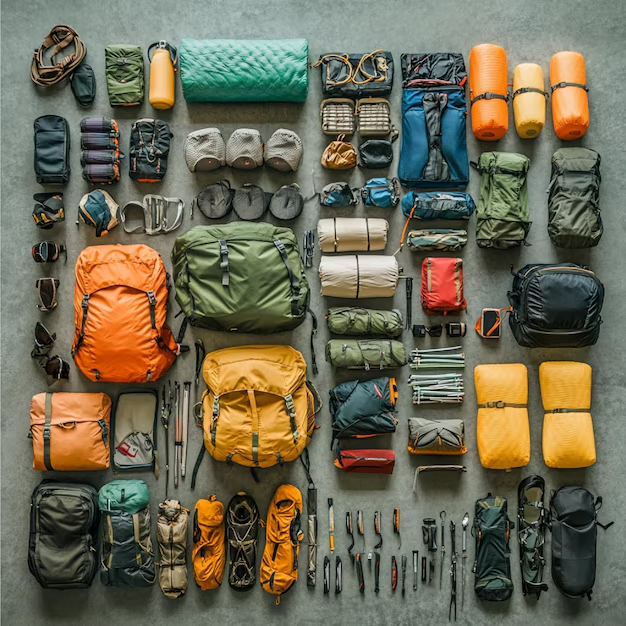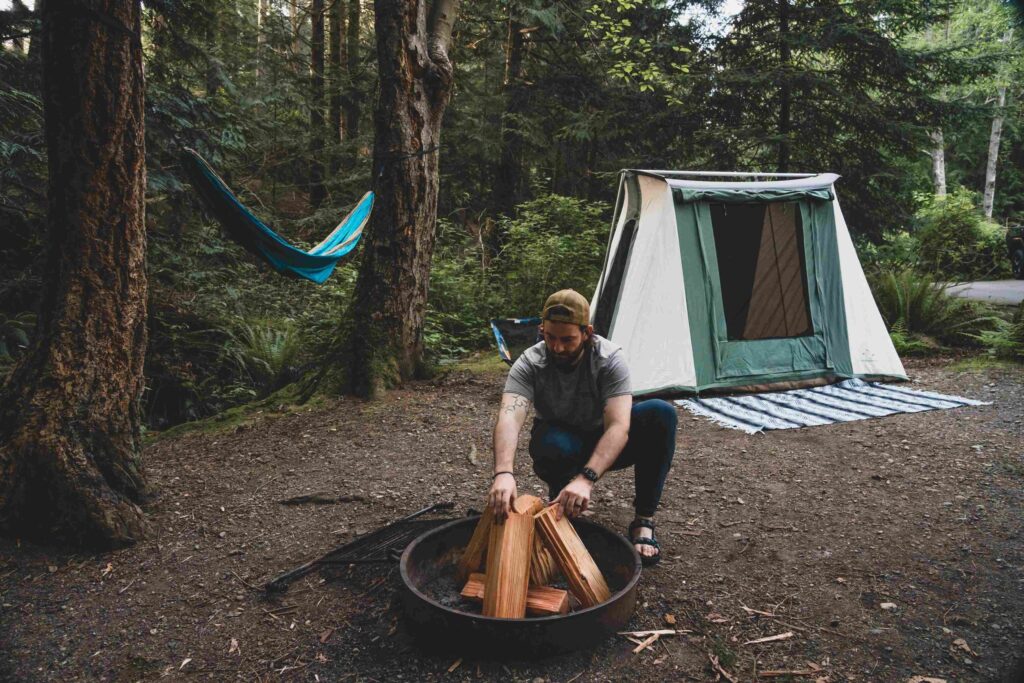How to Go Ultralight camping Without Sacrificing Comfort: Ultralight backpacking isn’t just about shedding pounds from your pack; it’s a mindset. By focusing on what’s truly essential, you can enhance your mobility, reduce fatigue, and make your outdoor adventures more enjoyable. The key? Smart gear choices and continuous refinement. Here’s how to embrace ultralight backpacking without compromising on comfort or safety.
The Minimalist Mindset
At its core, ultralight backpacking is about simplicity and intentionality. Start by asking yourself: What do I really need for a successful trip? By redefining your essentials and embracing multifunctional gear, you can achieve a lighter pack without feeling deprived. This shift in thinking requires you to reevaluate each item you bring, considering its weight, utility, and impact on your overall experience.
One of the foundational principles of the minimalist mindset is adopting gear that serves multiple purposes. For instance, a poncho can double as rain gear and a shelter, saving you the weight of carrying two separate items. Similarly, a titanium spork eliminates the need for both a fork and a spoon, offering durability and utility in a single, lightweight item. By viewing every item in your pack through the lens of necessity and versatility, you’ll be able to trim down your load significantly, this is really important in mastering how to go ultralight camping without sacrificing comfort. No point in waisting weight.
Beyond gear, the minimalist mindset extends to your planning process. Think critically about your itinerary and expected conditions. Packing with precision means you won’t bring “just in case” items that add unnecessary weight. Instead, trust in your ability to adapt with well-chosen essentials. Over time, this mindset becomes second nature, turning each adventure into a lesson in refinement.
Gear Selection: Prioritize Lightweight and Multifunctional
Shelter
Your shelter is often one of the heaviest items in your pack, making it a prime target for weight reduction. Ultralight options, such as those made from Dyneema or silnylon, offer a remarkable balance of durability and reduced weight. For solo hikers or those in milder climates, a tarp setup can be an excellent alternative to a traditional tent. While it requires a bit more skill to pitch and might not offer the same level of comfort as a tent, the weight savings are significant.
Additionally, consider shared shelters if you’re traveling with a group. A two-person ultralight tent split between two hikers can weigh less per person than individual shelters. Remember, every ounce matters when trekking long distances.
Sleeping System
Your sleeping bag or quilt should be chosen with your destination’s climate in mind. Quilts, which forego the back insulation of traditional sleeping bags, are often lighter while still providing ample warmth when paired with an appropriate sleeping pad. For colder conditions, prioritize down insulation, which offers the best warmth-to-weight ratio. Synthetic options, while slightly heavier, are more resistant to moisture and may be preferable in wetter climates.
When it comes to sleeping pads, ultralight options such as inflatable or closed-cell foam pads strike a balance between weight and comfort. A good night’s sleep is essential, so invest in a pad that suits your sleeping style without adding unnecessary bulk.
Cooking Gear
Cooking systems can vary widely depending on your style of backpacking. For those aiming to reduce weight, consider an ultralight stove paired with titanium cookware. These materials are not only lightweight but also highly durable, ensuring they last for many trips. Alternatively, you might explore stoveless meal options like dehydrated foods or pre-prepared snacks that require minimal preparation. By eliminating the need for a stove and fuel, you can save significant weight and simplify your setup. Dont overpack for cooking, see if you really need the weight. this helped me when i learned the art of how to go ultralight camping without sacrificing comfort.
Clothing: Efficient and Layered

Packing clothing for ultralight backpacking requires careful planning and a layering approach to adapt to changing weather conditions. Begin with a reliable base layer made of moisture-wicking materials such as merino wool or synthetic blends. These fabrics keep you dry and comfortable by pulling sweat away from your skin.
For insulation, opt for a lightweight down or synthetic jacket that can compress into a small package. Down is ideal for its warmth-to-weight ratio, while synthetic options offer better performance in damp conditions. A waterproof and windproof shell should complete your layering system, providing essential protection from the elements.
Minimize the number of clothing items by focusing on versatility and quick-drying fabrics. For instance, convertible pants that double as shorts or lightweight gloves that also provide sun protection can reduce the need for additional items. Pack only what you’ll need based on the expected conditions, and always remember that less is more. You want to be comfortable while camping, learning how to do that is really important to go ultralight camping without sacrificing comfort.
Food and Water: Smart Planning
Food
Fueling your body is crucial during any backpacking trip, and ultralight adventurers need to prioritize calorie-dense options that pack small and weigh little. Dehydrated meals are a staple for this reason, offering balanced nutrition with minimal preparation. Supplement these with energy bars, nut butters, and dried fruits to provide quick boosts of energy throughout the day. Aim for foods that provide sustained energy without taking up too much space in your pack.
Meal planning is another critical aspect. Calculate the number of calories you’ll need per day based on the intensity of your trip and adjust your food supply accordingly. Overpacking food is a common mistake that adds unnecessary weight, so be precise in your calculations. Even i used to over pack food and cooking items. i used to take a cast iron pan with me! this is until i learned how to go ultralight camping without sacrificing comfort, and it has saved me many times.
Water
Water management is another area where you can cut weight without compromising safety. Instead of carrying large amounts of water, bring a lightweight filtration system like a Sawyer Squeeze or SteriPEN. These tools allow you to purify water from natural sources along your route, reducing the need to carry multiple liters at a time. Plan your journey around reliable water sources and refill as needed.
In arid regions where water sources are scarce, consider carrying collapsible water containers that can be packed away when not in use. This strategy ensures you have adequate water storage without adding bulk to your pack.
Techniques to Save Weight
One of the most effective strategies for minimizing your pack weight is conducting a post-trip audit. After each trip, lay out all your gear and ask yourself two critical questions: “Did I use this?” and “Do I need this?” Any items that go unused (excluding essential safety gear) can likely be left behind on future trips. this is important if you want to learn how to go ultralight camping without sacrificing comfort.
Additional weight-saving techniques include:
- Cutting unnecessary packaging: Repackage food and toiletries into smaller containers that suit the duration of your trip. Removing excess packaging can save several ounces.
- Sharing group gear: If you’re hiking with others, coordinate to avoid redundancy. Sharing items like stoves, pots, and first-aid kits can significantly reduce each person’s load.
- Using lightweight alternatives: Replace heavier items with ultralight counterparts. For example, switch from a hardcover guidebook to a digital version on your phone.
Balancing Comfort and Functionality

While the goal of ultralight backpacking is to reduce weight, it doesn’t mean sacrificing all comfort. In fact, small comforts can enhance your experience and morale without adding much weight. For instance, a lightweight inflatable camp pillow can vastly improve your sleep quality, while a favorite snack can boost your energy and mood during challenging moments.
Finding the right balance between comfort and functionality is a personal journey. Test different setups on shorter trips to identify what works best for you. Keep refining your choices and adjust based on the specific demands of each adventure. Remember, ultralight backpacking is about striking a balance where your gear enhances your experience without becoming a burden.
Final Thoughts
Ultralight backpacking is a journey of continuous improvement. By adopting a minimalist mindset, selecting smart gear, and refining your packing list, you can lighten your load without giving up comfort. Each trip provides an opportunity to learn and adapt, helping you strike the perfect balance between weight, functionality, and comfort.
Ready to take the leap? Share your ultralight backpacking tips or experiences in the comments below. And don’t forget to subscribe for more insights and advice to elevate your outdoor adventures. Now you know how to go ultralight camping without sacrificing comfort
Discover more Blogs and tips here
All blogs and stories